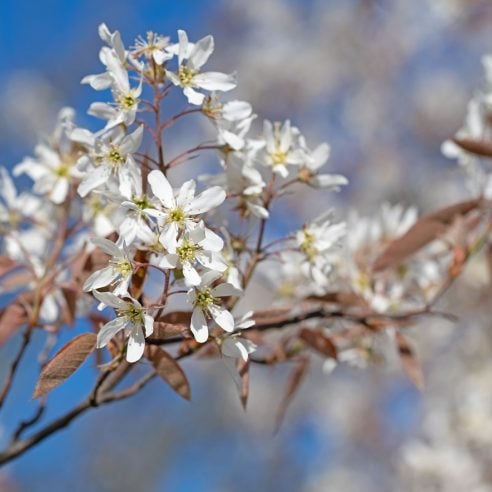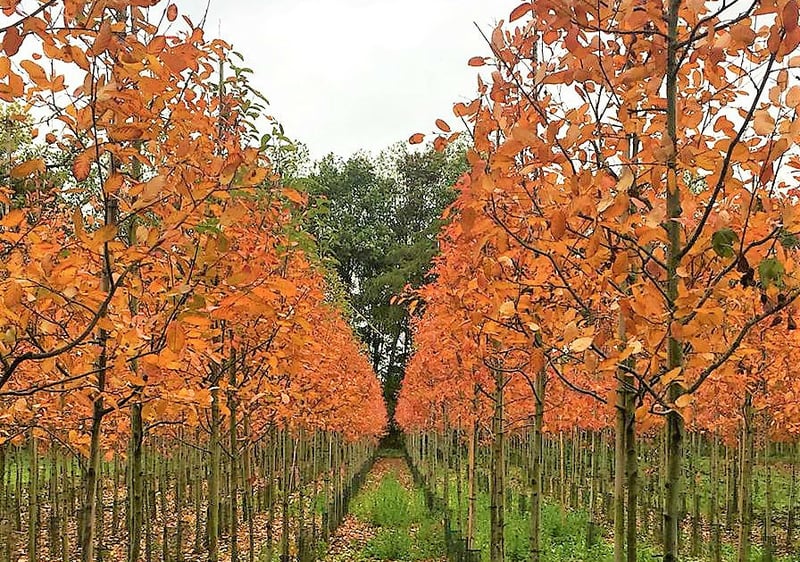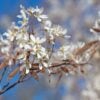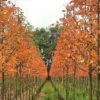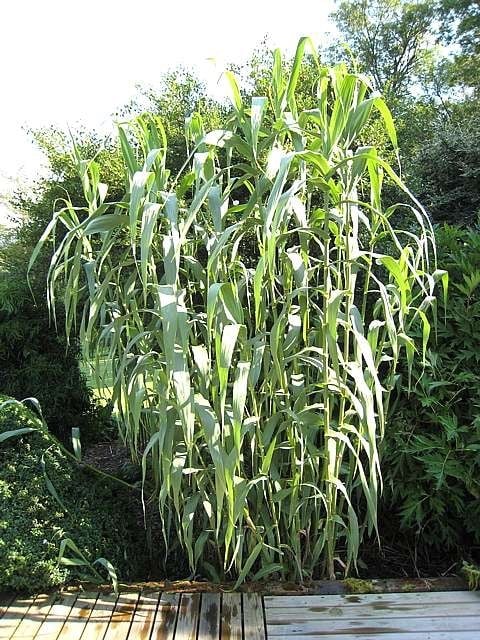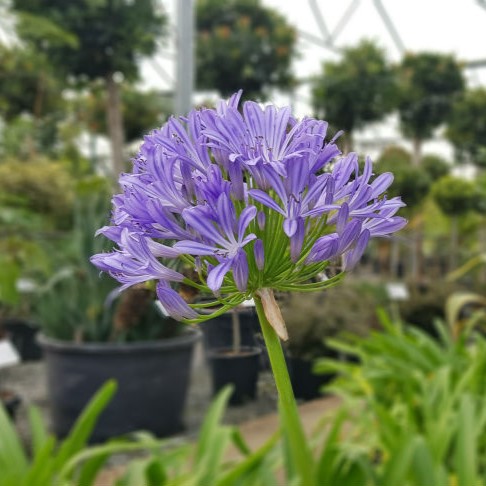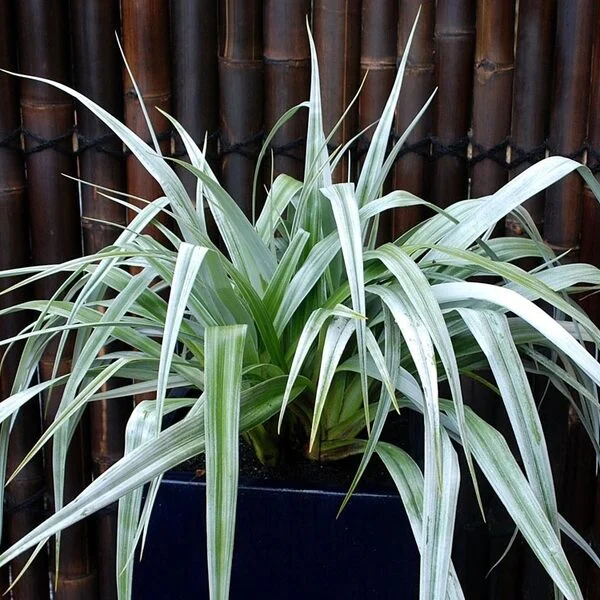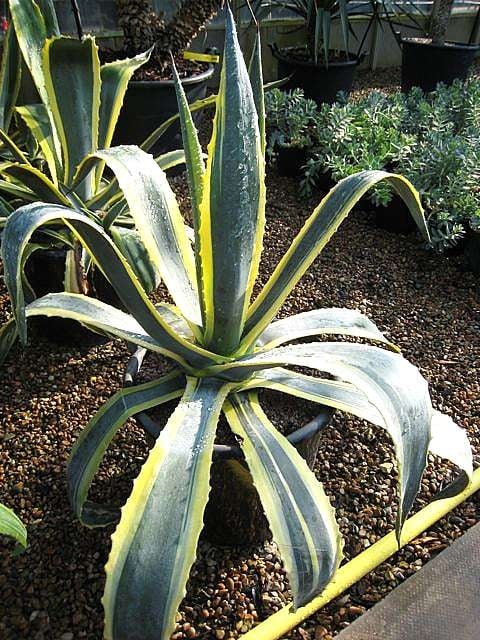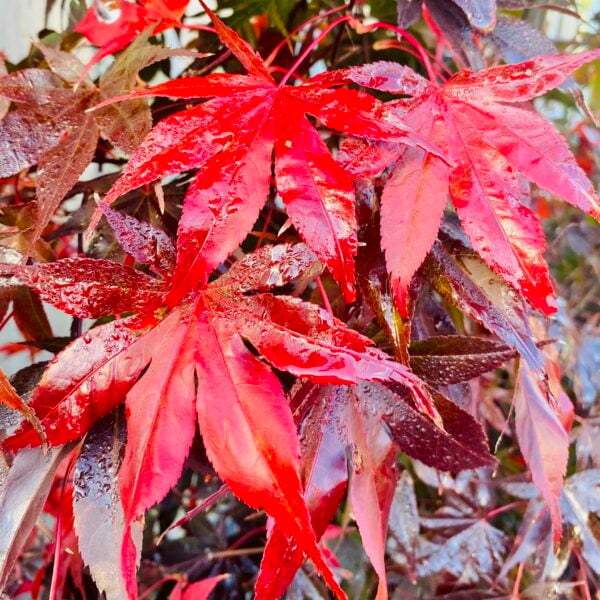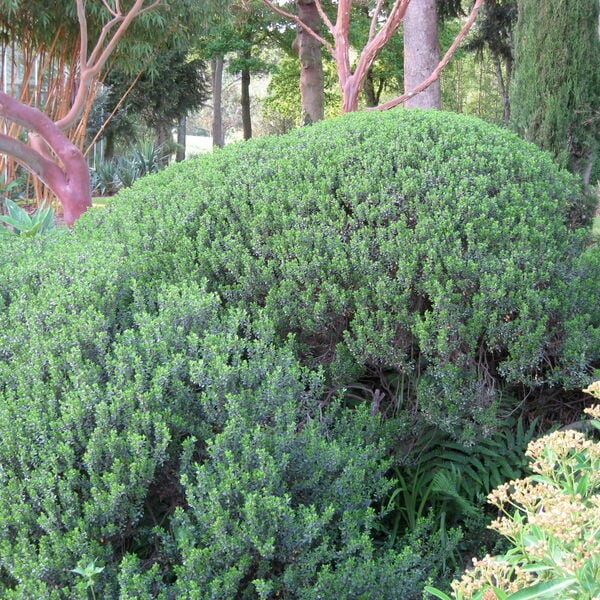Amelanchier lamarckii (Juneberry)
A multi-stemmed deciduous little tree (to 30ft) with copious white flowers in April, a graceful habit, good autumn colour and incredibly tough and easy to please. Please contact us for stock availability and sizes.

Hardiness level Green
It's not surprising that these Juneberry Trees are so popular. They've been in cultivation in Britain for (possibly) three centuries and are as indestructible as a plant can get. Plus masses of white flowers, good autumn colour and - with a bit of Creative Maintenance - great elegance.
Because of their popularity and the associated hybridization that tends to go with popularity, the exact identification and provenance of this genus causes mighty confusion (one of this species' many names during the 19th century was A. confusa). This is thought to have originated in North America but then became naturalized in parts of France.
Any reasonably well drained soil (it's really not fussy) and enough space to show off its lovely shape. Sun or light shade.
Propagated from cuttings.
N.B. When clipping several plants with the same tool, have a bucket containing a 5% bleach solution and swish your blades around for 30 seconds between plants to sterilise them. This will help avoid the chance of cross contamination of disease.
As with all woody plants, plant high, exposing as much of the taper at the base of the trunk as possible. Allowing soil to accumulate round the base of a tree can be fatal. Keep very well watered when first planted.
Additional Information |
|
|---|---|
| Soil Type | Clay, Dry / Well Drained, Sandy, Soggy /Damp (Plant high and you can get away with murder) |
| Light | |
| Plant Type | |
| Continent of Origin | |
| Tree Size | |
| Situation | Coastal, Exposed (To wind and sun), Mild City Gardens, Plants for Pots, Sheltered Garden |
| Flower Colour | |
| Hardiness | |





